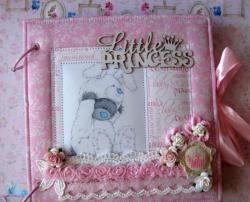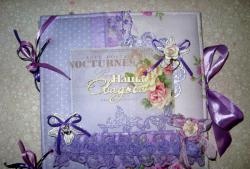Album for memory
With the advent of social networks and electronic file sharing services, the need to print photos has almost disappeared. They share their impressions of a trip or event, photographs of family and friends, not at home on the sofa with heavy family albums on their laps, but using the Internet, because it’s so simple: you post pictures on the network - and in a second all your “friends and subscribers” can already see them. However, the news feed quickly disappears, the pictures on the screen change, merge, and a person’s individuality is a little erased behind a series of reposts.
What to do? Record your impressions in an album!
The word “album” immediately brings to mind Soviet everyday life and the albums that occupied the guests, but now the design of photographs has acquired the characteristics of art. Scrapbooking is popular among needlewomen. The first mention of it dates back to 1598, and in the Middle Ages it was fashionable to collect poems, letters, and locks of hair. The girls designed books with wishes, poems, and portraits. Poets and artists were asked to “write something in an album” at creative evenings and family meetings.” This is nothing more than the ancestor of modern scrapbooking.Scrapbooking is similar to the design of a photo album, but in addition to photographs, it includes artifacts: buttons, train tickets, postcards, gift bows, poems and letters, and much, much more that can be found around the house. Usually an album is dedicated to one topic. Professional scrapbooking is a very expensive and complex activity. Objects and photographs are processed in such a way that they remain unchanged for a long time, that is, so to speak, for centuries. Tools for this art form are expensive and not always available in Russia. We suggest you engage in “non-professional” scrapbooking, designing photo albums dedicated to certain family events.
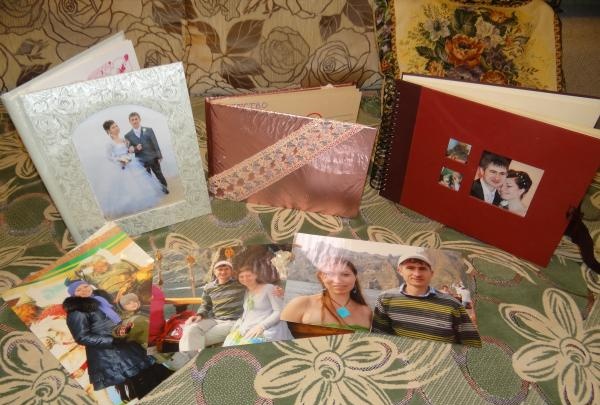
We will need:
• Ready-made magnetic album with a cover suitable for the theme;
• Artifacts that look flat or almost flat (so that the album closes well): movie tickets, restaurant menus, hotel booklets, buttons, printed texts of poems, letters, SMS (depending on who, of course, the album is made for);
• Selected and printed photographs;
• Clippings from magazines and newspapers: pictures, headlines, photographs. If you want to design an album with humor, then they will be very useful to you: assign the body of Marilyn Monroe or Arnold Schwarzenegger to one of the heroes of the photo cards;
• Scissors, glue, colored paper, textured paper and anything else that might be useful;
• The main thing we need is, of course, taste and imagination.
Here is an example of the materials we may need:
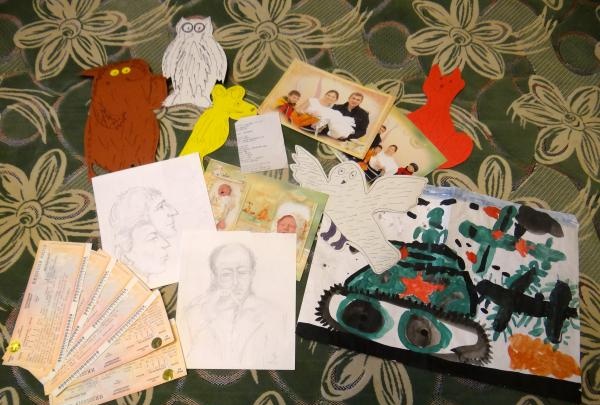
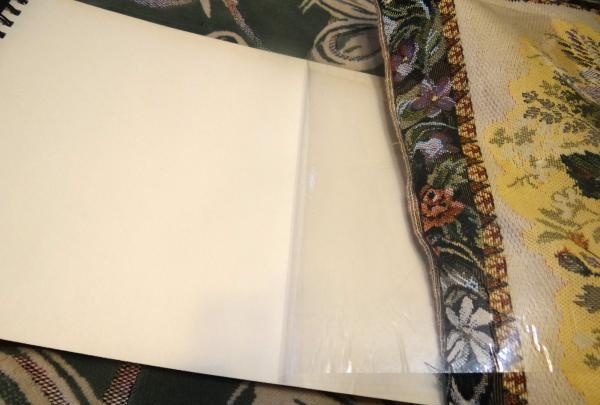
First, free up your workspace and make it convenient for work. You need a large enough space to lay out all the headings, clippings, pictures and not get confused in them. Decide on the theme of the album.Albums can tell about a trip, the birth of a child, the first year of marriage, a wedding, and so on. We lay out photographs and artifacts on magnetic sheets of the finished album. Here's what a magnetic album page looks like:
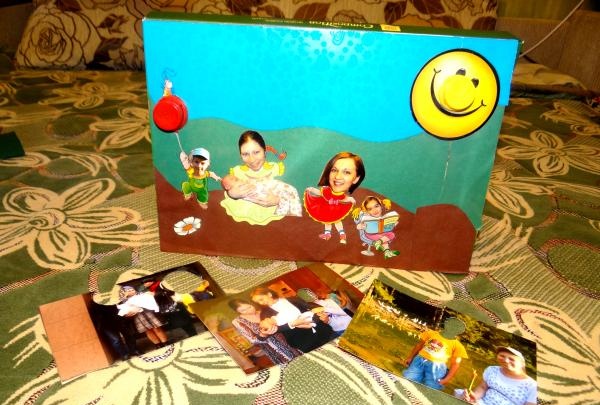
Where necessary, you can use glue. You can also use scraps of fabric from your favorite clothes and diapers, handprints and foot prints of both adults and children, strands of hair from loved ones and children, pictures from torn children's books, and so on. What else can you use?
Clippings from horoscopes:
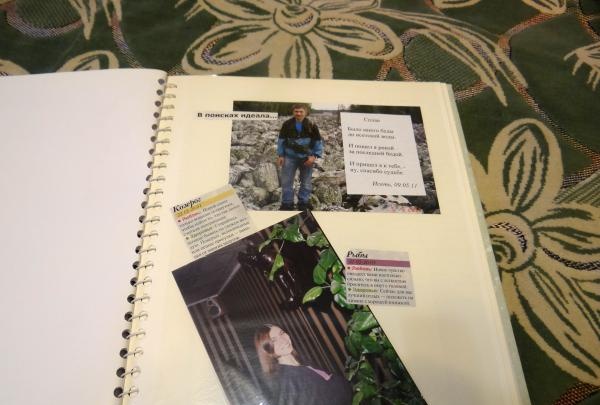
Poems, maybe even yours:
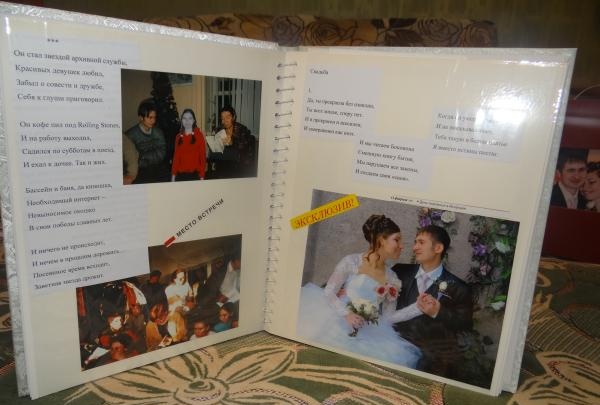
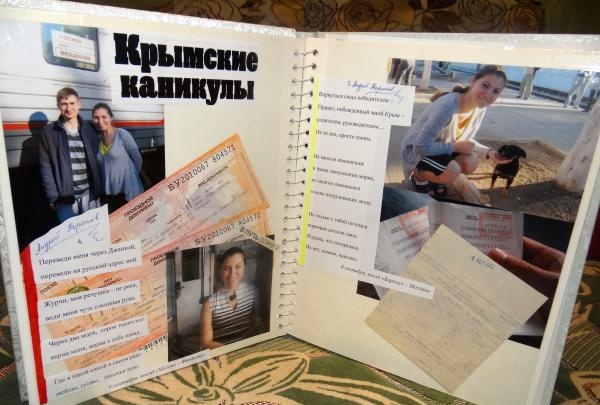
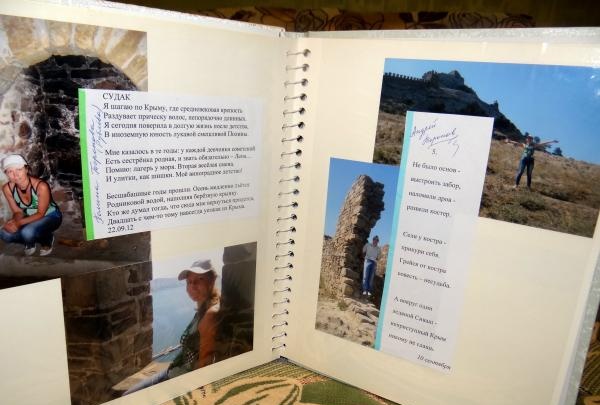
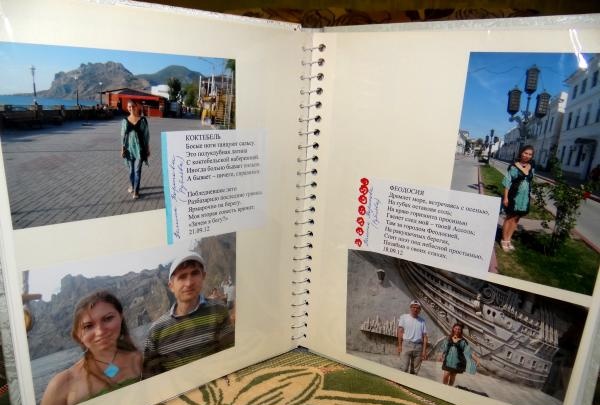
Festival programs:
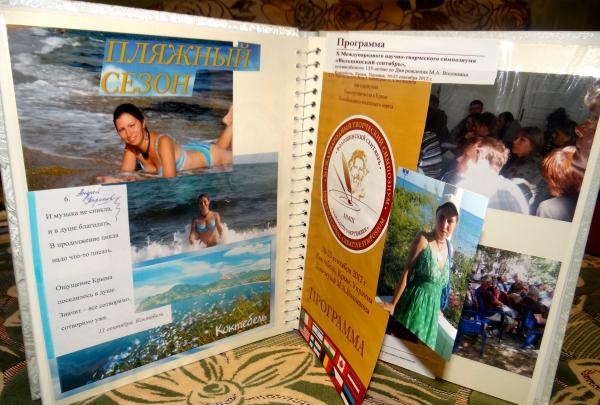
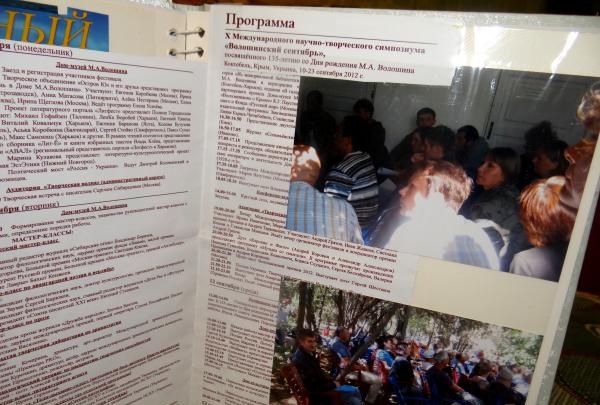
Autumn leaves and pictures from magazines:

Strands of children's hair and ultrasound pictures:
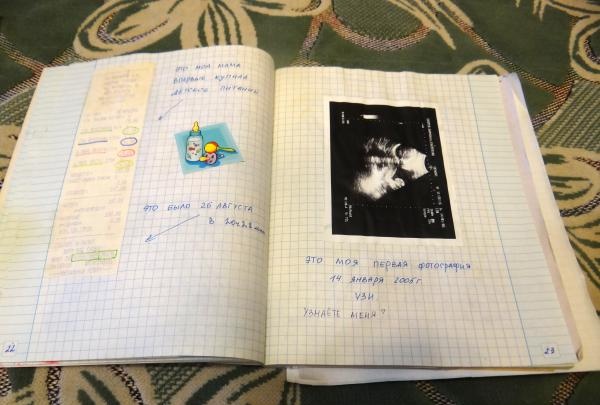
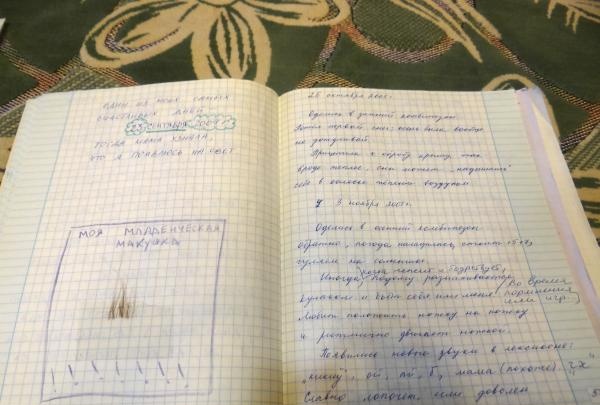
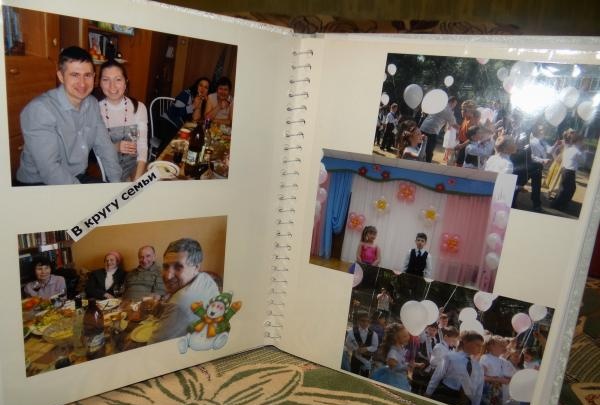
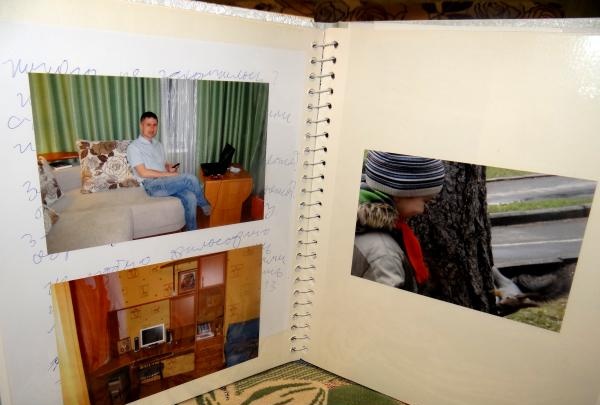
Once you have everything laid out, you can lower the film. Instead of a magnetic album, you can use a simple album with cardboard sheets, however, now there are few places where you can find these for free sale. Here, for example, is how the bride's album is designed:
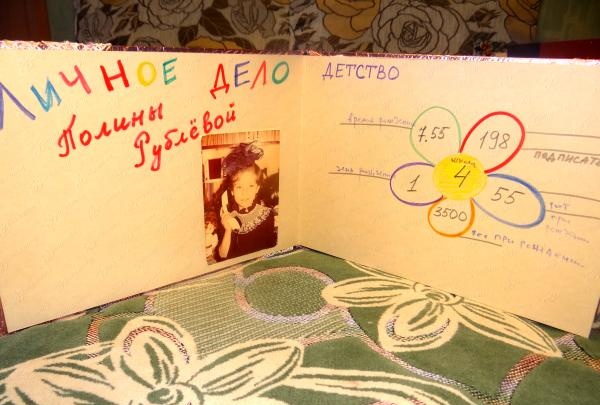
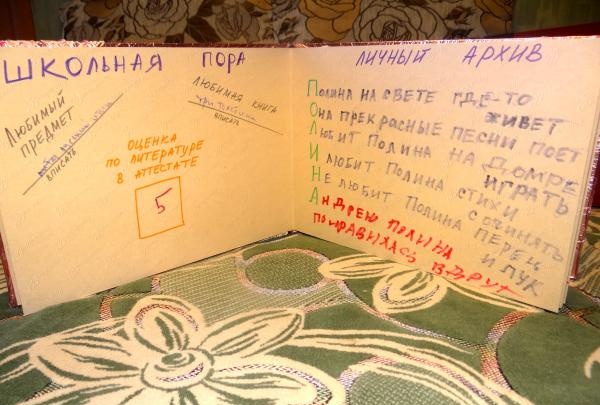
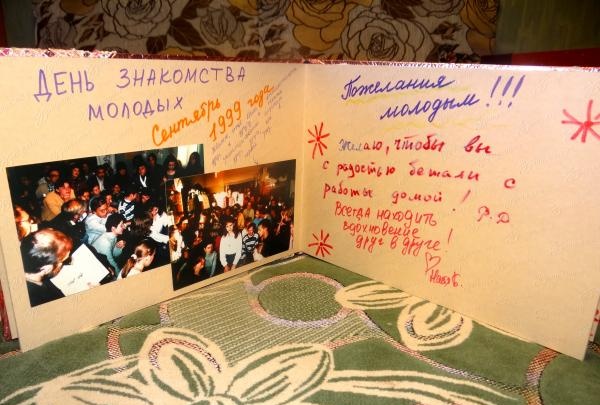
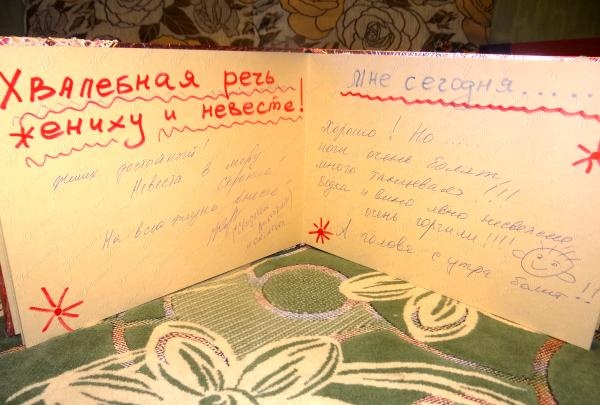
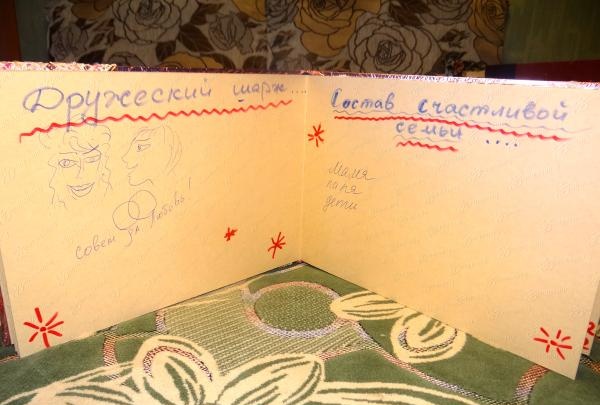
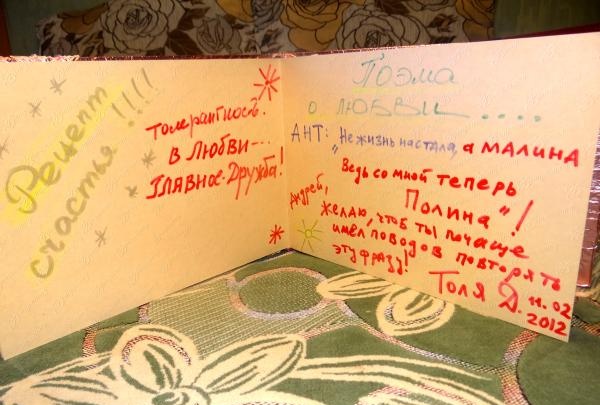
It is very good if the bride herself makes an album for wedding wishes. It can include a variety of riddles for the groom, which he will solve at the ransom. Of course, you can combine such creativity with computer technology:
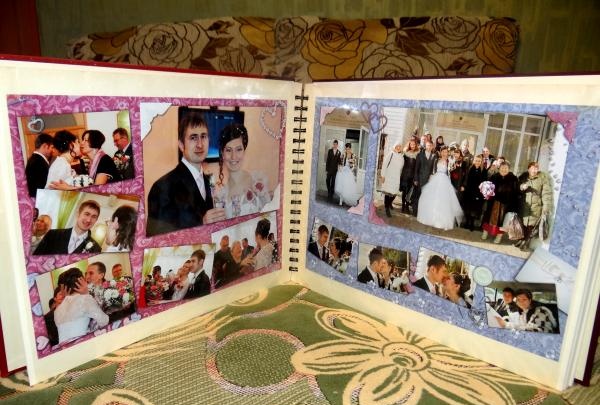
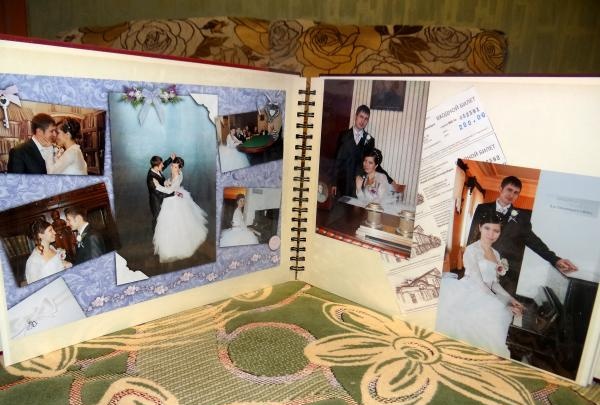
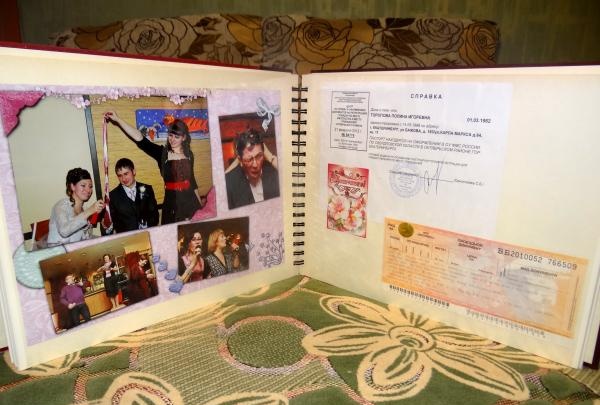
It is very important, even before making the album, to consider the fragments you have and decide on the number of pages, as well as what exactly each of them will tell. In the case of a child, for example, this could be:
1. Mom's pregnancy;
2. Photos from the maternity hospital;
3. Discharge from the maternity hospital;
4. First day at home;
5. First swim, first walk;
6. First steps and words;
7. Anniversary celebration.
And, most importantly, when making such a unique piece of furniture, do not forget to include a good mood!
What to do? Record your impressions in an album!
The word “album” immediately brings to mind Soviet everyday life and the albums that occupied the guests, but now the design of photographs has acquired the characteristics of art. Scrapbooking is popular among needlewomen. The first mention of it dates back to 1598, and in the Middle Ages it was fashionable to collect poems, letters, and locks of hair. The girls designed books with wishes, poems, and portraits. Poets and artists were asked to “write something in an album” at creative evenings and family meetings.” This is nothing more than the ancestor of modern scrapbooking.Scrapbooking is similar to the design of a photo album, but in addition to photographs, it includes artifacts: buttons, train tickets, postcards, gift bows, poems and letters, and much, much more that can be found around the house. Usually an album is dedicated to one topic. Professional scrapbooking is a very expensive and complex activity. Objects and photographs are processed in such a way that they remain unchanged for a long time, that is, so to speak, for centuries. Tools for this art form are expensive and not always available in Russia. We suggest you engage in “non-professional” scrapbooking, designing photo albums dedicated to certain family events.

We will need:
• Ready-made magnetic album with a cover suitable for the theme;
• Artifacts that look flat or almost flat (so that the album closes well): movie tickets, restaurant menus, hotel booklets, buttons, printed texts of poems, letters, SMS (depending on who, of course, the album is made for);
• Selected and printed photographs;
• Clippings from magazines and newspapers: pictures, headlines, photographs. If you want to design an album with humor, then they will be very useful to you: assign the body of Marilyn Monroe or Arnold Schwarzenegger to one of the heroes of the photo cards;
• Scissors, glue, colored paper, textured paper and anything else that might be useful;
• The main thing we need is, of course, taste and imagination.
Here is an example of the materials we may need:


First, free up your workspace and make it convenient for work. You need a large enough space to lay out all the headings, clippings, pictures and not get confused in them. Decide on the theme of the album.Albums can tell about a trip, the birth of a child, the first year of marriage, a wedding, and so on. We lay out photographs and artifacts on magnetic sheets of the finished album. Here's what a magnetic album page looks like:

Where necessary, you can use glue. You can also use scraps of fabric from your favorite clothes and diapers, handprints and foot prints of both adults and children, strands of hair from loved ones and children, pictures from torn children's books, and so on. What else can you use?
Clippings from horoscopes:

Poems, maybe even yours:




Festival programs:


Autumn leaves and pictures from magazines:

Strands of children's hair and ultrasound pictures:




Once you have everything laid out, you can lower the film. Instead of a magnetic album, you can use a simple album with cardboard sheets, however, now there are few places where you can find these for free sale. Here, for example, is how the bride's album is designed:






It is very good if the bride herself makes an album for wedding wishes. It can include a variety of riddles for the groom, which he will solve at the ransom. Of course, you can combine such creativity with computer technology:



It is very important, even before making the album, to consider the fragments you have and decide on the number of pages, as well as what exactly each of them will tell. In the case of a child, for example, this could be:
1. Mom's pregnancy;
2. Photos from the maternity hospital;
3. Discharge from the maternity hospital;
4. First day at home;
5. First swim, first walk;
6. First steps and words;
7. Anniversary celebration.
And, most importantly, when making such a unique piece of furniture, do not forget to include a good mood!
Similar master classes
Particularly interesting
Comments (1)

